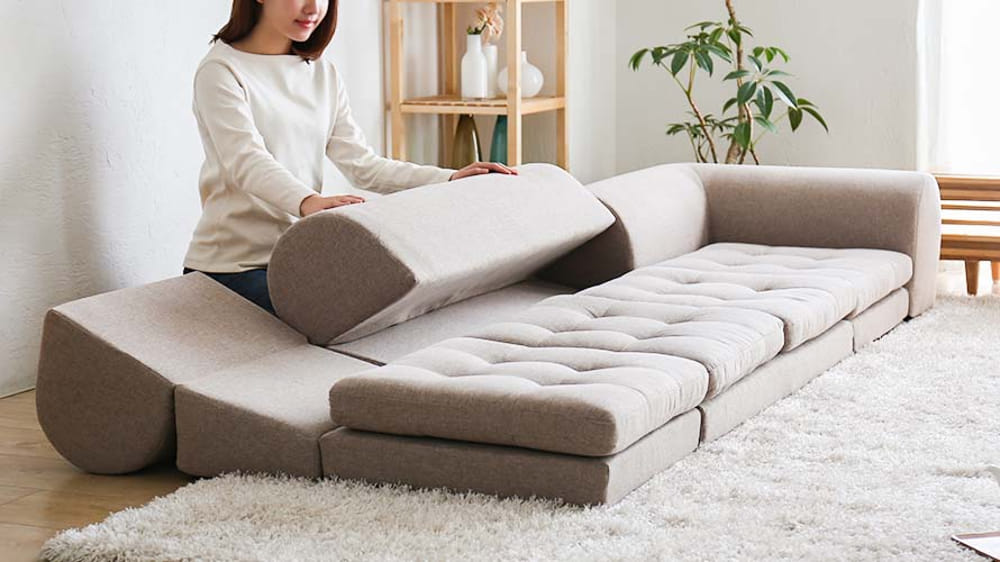
A Japanese sofa bed is a type of sofa that can be used as a bed or as a couch. It is also known as a daybed in the United States and Canada. This type of couch is common in Japan, where it was originally developed.
The Japanese sofa bed has two types: the recliner-style and the pull-out style. The recliner-style works by having one or more seats that can be folded out to create the bed surface. The pull-out style has a seat that can be pulled out to create the bed surface.
What are Japanese style beds called?
What is a shikibuton? A shikibuton is a Japanese futon mattress designed to rest on the floor. It can be rolled up and put away when you’re not sleeping, freeing up extra space.[1]
What is different about Japanese beds?
The biggest differentiator in the traditional way the Japanese sleep is that they sleep on the floor, on top of a precisely arranged combination of cushions and mats. At the bottom is a tatami mat, followed by a Shikifuton (or mattress) and a kakebuton (the duvet), and topped off with a buckwheat hull pillow.[2]
What is a Japanese folding bed called?
Unlike the sofa beds called “futons” in the US, Japanese futons are quilted sleeping pads that are stuffed with cotton or fiber fill and can sit directly on the floor or on a foam, tatami, or wooden mat.[3]
What is a Japanese sofa?
It is a status of forces agreement (SOFA) as stipulated in article VI of that treaty, which referred to “a separate agreement” governing the “use of […] facilities and areas [granted to the U.S.] as well as the status of United States armed forces in Japan”.[4]
Do you put sheets on a Japanese futon?
Unlike Western-style beds, which require a bed frame and a mattress, the Japanese futon lays directly on the floor. It’s quite easy to set up a futon; we have a manga guide here! First, lay the shikibuton on the floor. Next, spread the sheets on top of the futon, and then fold the excess underneath for a tight fit.[5]
How much does a Japanese bed cost?
A spring cheapie is around 11,000 yen (semi-single) to 20,000 yen (queen). Top-end spring mattresses are around 50,000 yen (semi-single) to 90,000 yen (queen). Bed frame prices in Ikea are wide in range. Singles as low as 5,000 yen and up to around 65,000 yen.[6]
What are Japanese beds like?
Tatami Mats It is common practice in Japan to sleep on a very thin mattress over a tatami mat, made of rice straw and woven with soft rush grass. The Japanese believe this practice will help your muscles relax, allowing for a natural alignment of your hips, shoulders and spine.[7]
Why are Japanese beds on the floor?
In Japan, the majority of people sleep on the floor rather than in western-style beds. This has always been a part of Japanese customs dating back to the 10th century when people placed hemp mats on the floor before sleeping. Today, many Japanese people sleep on a tatami mat made of rice straw.[8]
How long do Japanese futons last?
Japanese futon mattresses are typically two to three inches thick, stuffed with cotton, and are pliable enough to roll up in during the day. They are designed to last around fifteen years, which is a longer lifespan than your average western mattress, and this is down to the craftsmanship involved.[9]
Can you sleep on a tatami mat?
If you’re a back sleeper, tatami mats can be a comfortable way to improve the alignment of your spine. That’s because the mattress is firm, especially compared to a regular mattress.[10]
Can you sleep on a futon every night?
You can also use a futon mattress for a traditional bed. Many of our customers prefer futon mattresses to other traditional bedding. So yes, well made futons are an excellent choice for everynight sleeping.[11]
What is Japanese furniture style?
What Is Japanese Furniture? Japanese furniture relies on the use of natural materials such as bamboo, fine woods, silk, rice straw mats, and paper. It blends modern elements with traditional Japanese design in an artful manner. The result is furniture that is simple, comfortable, and flexible.[12]
